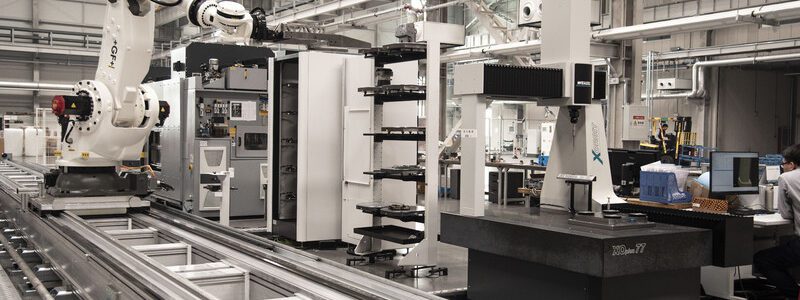
Interview with Thomas Werner, Head of Construction
What is the current status of automation in quality assurance?
A CNC coordinate measuring machine has always been suitable for automation. Among many other advantages, automation also has the effect of eliminating the influence of the operator, on whom the measurement results are fundamentally highly dependent. Via standardized software and hardware interfaces, our measuring solutions can easily cooperate and be integrated with automation systems.
Has there been an increased demand for automation solutions in metrology in recent years?
We notice that in every case. In the past, individual parts were measured in the measuring room under optimal conditions. Nowadays, much more is measured, tolerances are tighter and series production is becoming more and more perfect. The suppliers have to produce perfect parts with low variance under high cost pressure in competition. Measurements have to be taken continuously and quickly. The feedback of the measurement results into the production process allows the manufacturers to quickly identify trends and react immediately before, for example, rejects occur.
When is automation worthwhile?
Is this only the case when large quantities have to be inspected or measured? What about smaller batch sizes, which are increasingly important in flexible production? To what extent can automation keep pace here?
For the measuring solution, it is irrelevant whether the same or different parts are always measured. For each additional part, however, new measuring programmers or workpiece fixtures are required. The entire process must be automatable. This requires at least a certain similarity of the parts so that the measuring system, the measuring range and the sensors fit. Mostly, there are already fixed manual processes that the customer then wants to automate. Here we can support him well with our many years of experience.
How is automation implemented? Who takes care of it – users, metrology manufacturers or automation experts?
Often the user is not our first point of contact when it comes to automation. It is rather the production planners who talk to us. As a metrology manufacturer, we then bring our automation partners on board. The other variant is that complete production lines are requested and we as a partner are responsible for the integration of an automated measuring cell or measuring machine.
How does your company address the issue of automated quality assurance?
We have our own task force in this area and strong automation partners. Our measuring machines are already pre-equipped for use in production lines and automation solutions and can be easily integrated via the WENZEL Automation Interface (WAI). Our automation projects are usually very individual and are often subject to high secrecy guidelines, as the manufacturers do not want to show their cards. Ultimately, however, it boils down to the fact that we individually adapt our standards and our large product portfolio to the respective customer processes.
To what extent is the closed loop already a reality – i.e. using measurement and test results to optimize manufacturing processes?
In principle, close loop means that our measurement results at the end of the production chain are used again at the beginning of the next one in order to adjust if necessary. We deliver the target/actual deviation to a statistics database. The result can then be used to readjust production accordingly. When certain intervention limits are reached, the operator can react. However, it is not an easy task and the more complex the component, the more complicated it becomes. A challenge from practice is when the measuring machine and the production machine have different coordinate systems and axes. Here, algorithms are needed to help with the conversion so that the processing machine can be changed over. However, the effort helps to optimize the production processes in any case.

